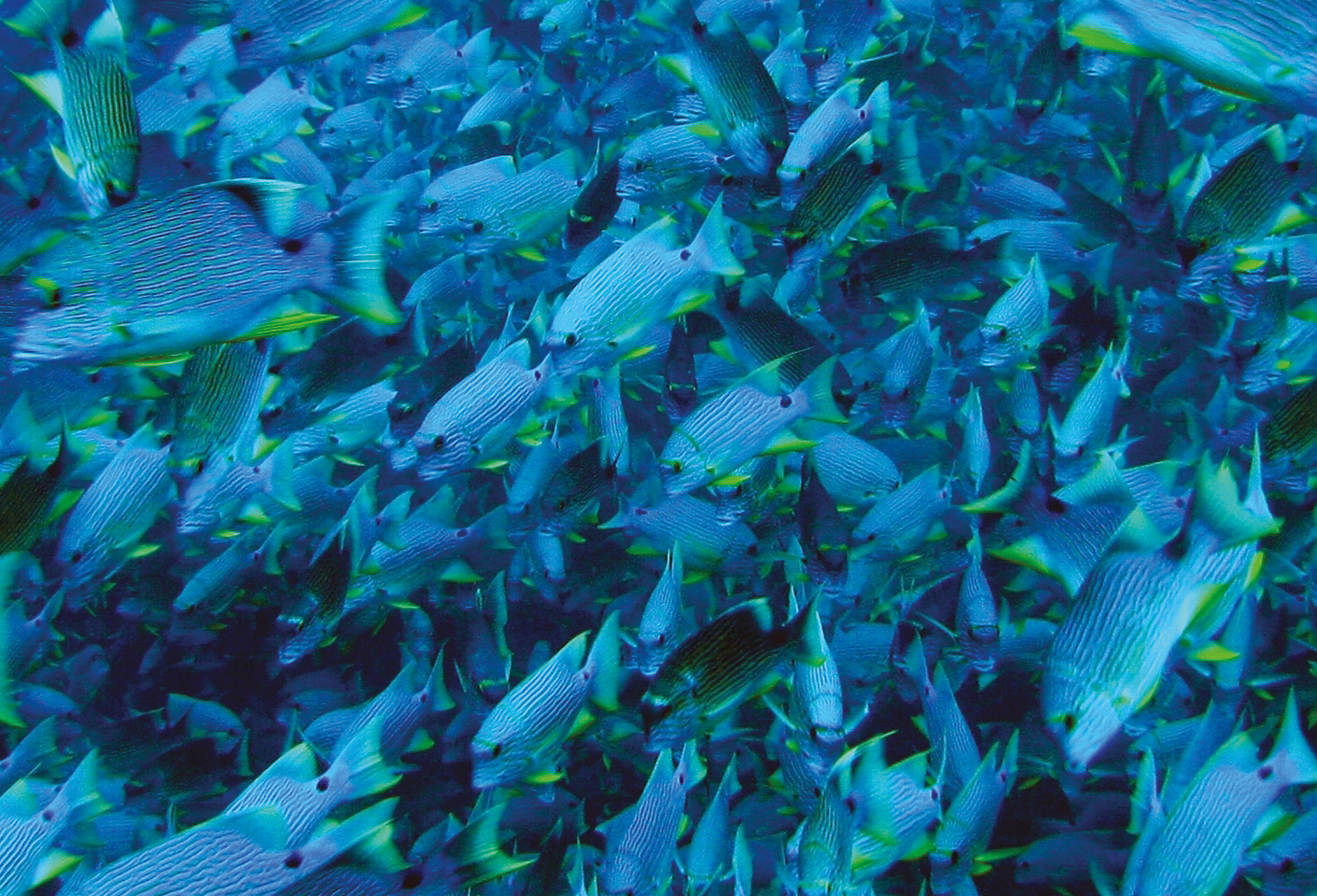Image: © Jiro Sakaue, SCRFA
To gain access to full information on spawning aggregations, download the information sheet produced by the LMMA Network and SPC.
What is a spawning aggregation?
A fish spawning aggregation is a large number of fish gathered together in one place and at a particular time to spawn and produce fertilised eggs. These eggs hatch into larval stages that grow into juveniles and then into adults. As spawning aggregations often occur at the same time each year at the same sites, they are usually very predictable.
How can we manage and protect aggregating species?
Managing fisheries based on fish that form spawning aggregations relies on fishing communities taking a major role. This is because local fishers generally know which species form spawning aggregations and know the times and the sites at which they gather to spawn.
Step 1: raise awareness
The first step is to hold community meetings to make sure everyone is aware of how important spawning aggregations are in providing fish on a sustainable basis. All local fishers must be present at the meetings as it is necessary to identify all aggregation sites and spawning times to make management more effective.
Fisheries agency staff or NGOs may be involved in facilitating the meetings and in providing technical advice but local fishers may be reluctant to reveal the location of spawning sites to outsiders. Visitors must respect the wishes of the community if they wish to keep the information confidential.The community meetings should provide answers to the following questions.
Which species form spawning aggregations? – set priorities to protect species at most risk.
What is known about the life-cycle of the species involved?
Where do the spawning aggregations occur – how many different spawning sites are there?
When do aggregations occur – once a year or more often? - at the same time each year? – at what phase of the moon?
How long does each aggregation last?
What management measures can be taken?
How can these management measures be enforced?
Step 2: make rules
The second step is to develop a management plan for aggregating species. The key management action must be to ban, or at least reduce, the catching of fish both travelling to and aggregating at the spawning sites. This would involve stopping or restricting fishing during particular times at particular sites.
If no agreement can be reached on a total ban on catching spawning fish, an alternative but less desirable measure would be to restrict the use of overly-efficient fishing methods; the use of nets, spears and traps could be banned, for example, but the use of baited hooks on lines could be allowed by a limited number of fishers. However, any fishing on spawning aggregations is likely to disturb the spawning fish and make reproduction less successful.
Ideally, protecting fish spawning aggregations should be part of a wider management plan that includes the protection of all life-cycle stages and habitats of the fish. Imposing and enforcing minimum size limits, for example, may be necessary to allow more small fish to grow to sizes at which they can aggregate and reproduce. Management actions for particular species are discussed in other SPC information sheets in this series,
Habitat protection is an important part of any management plan. The creation of community managed no-take areas or fish reserves, for example, may provide protection for habitats on which many species depend and may include the spawning sites of some species.
Which species form spawning aggregations?
Many species gather together to form spawning aggregations or migrate in large groups to spawning sites. In Pacific island countries, these include groupers, snappers, mullets, parrotfish, trevallies, surgeonfish, rabbitfish, emperors, goatfish and mackerels.
Most fish that form spawning aggregations live in other areas at various stages of their life-cycle. The eggs and larval stages of many reef fish, for example, drift beyond the reefs before they move to shallower water and settle on reefs to grow into adults. The spawning aggregations often last for only short periods, from 2 to 7 days, around the full or new moon.
The most likely reason that so many different fish gather together to spawn is that aggregations increase the chances of reproduction being successful. Many marine animals, including 96% of all fish, reproduce externally by releasing sperm and eggs into the water.
As males and females may be spread out over large areas, spawning aggregations allow them to gather together in one place. A large concentration of male and female fish in the one area allows mate selection and competition, and increases the chances of sperm reaching and fertilising the drifting eggs.
Another reason could be that spawning sites are situated where currents carry the larval stages to the open sea and away from inshore predators. Or perhaps spawning sites are positioned so that currents carry the larval stages back to the parent populations on home reefs.
For most species, spawning aggregations are essential for reproduction, and in any one area, the number of aggregations for a particular species is few, so each of these aggregations is important.
When fish aggregate or mass together in large numbers at predictable times and places they become much easier to catch than when they are scattered over large areas. Aggregating fish are easily caught by fishers using nets, handlines with hooks, spears or traps.
Catching fish as they gather in spawning aggregations is destructive as these breeding fish are responsible for producing small fish, many of which will grow and be available to be caught in future years. In many parts of the world, fishing on spawning aggregations has resulted in the total disappearance of some species from local areas.
Related resources

To gain access to full information on spawning aggregations, download the information sheet.
